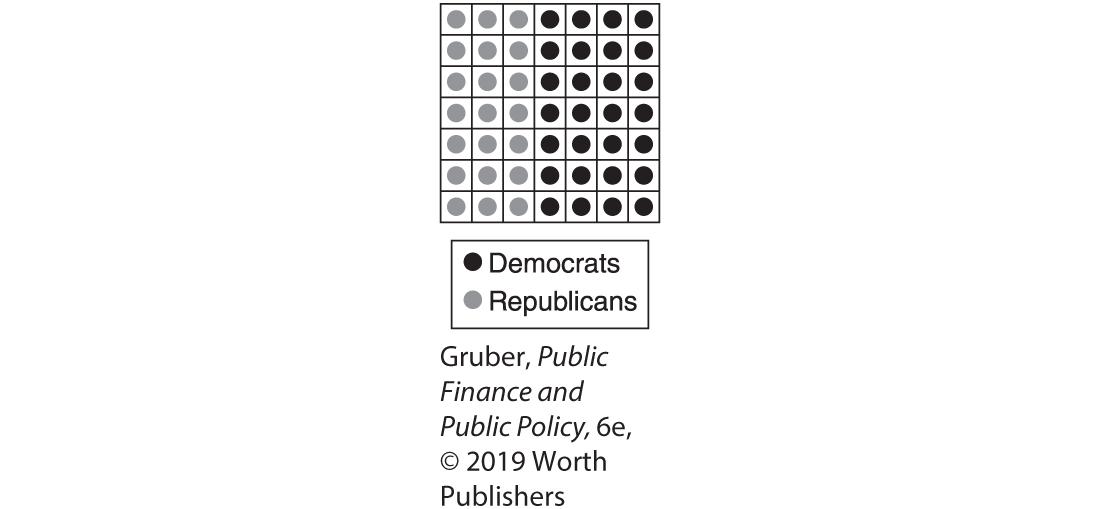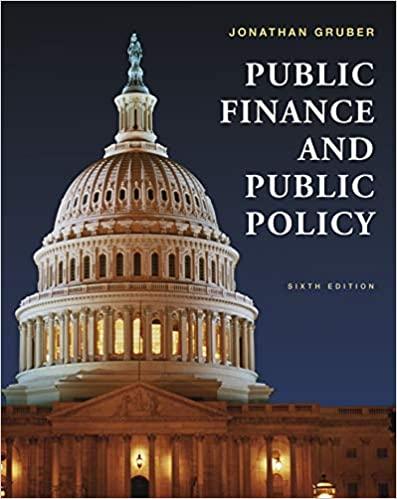a. Using parts (a), (b), and (c) of Problem 11, calculate theefficiency gap of the three congressional
Question:
a. Using parts (a), (b), and (c) of Problem 11, calculate the“efficiency gap” of the three congressional elections depicted.
b. Comment on each of the three election results in Question 11 from the standpoint of fairness. Which election result is likely to be perceived as most fair and why? How does the “efficiency gap” metric calculated in part (a) relate to the perceived fairness of an election?
Problem 11,
Consider the following “map” of a state with 49,000 residents, with the following geography: each square represents a precinct with 1,000 residents, and the color of the circle (gray or black) represents the partisan affiliation of the 1,000 residents, who predictably vote together as a uniform block in elections for the U.S. Congress (gray for Republicans, black for Democrats).

These 49,000 residents will be represented by 7 members in Congress. So the map must be divided into 7 districts comprised of 7 precincts, with 7,000 constituents in each district. The only rule for drawing the congressional map is that a precinct (square) must be connected horizontally or vertically (not diagonally) to at least one other precinct in the district.
a. Draw a map of 7 congressional districts that will produce a perfectly representative congressional delegation, in which the percentage of members of Congress who are Republicans and Democrats is equal to the percentage of constituents who belong to each of the two parties. Using the new map, determine how many Republicans and Democrats will go to the U.S. Congress after an election.
b. Suppose that Democrats win control of the state government through a series of unrelated local elections, giving them the opportunity to redraw the congressional map as they like.
Suppose their only goal in redrawing the congressional map is to produce the most favorable map for their own party. Draw such a map and use it to determine how many Republicans and Democrats will go to the U.S. Congress. Explain whether the Democrats used the technique of “cracking” or “packing,” discussed in the chapter, to achieve their desired result.
c. Suppose that in the next series of local elections Republicans win control of the state government, and are now in control of drawing the congressional map. Like the Democrats, they are focused solely on producing the most favorable map for their party. Draw their map and use it to determine how many Republicans and Democrats will be in the congressional delegation. Explain whether the Republicans used the technique of “cracking” or “packing” to achieve their goal.
Step by Step Answer:





